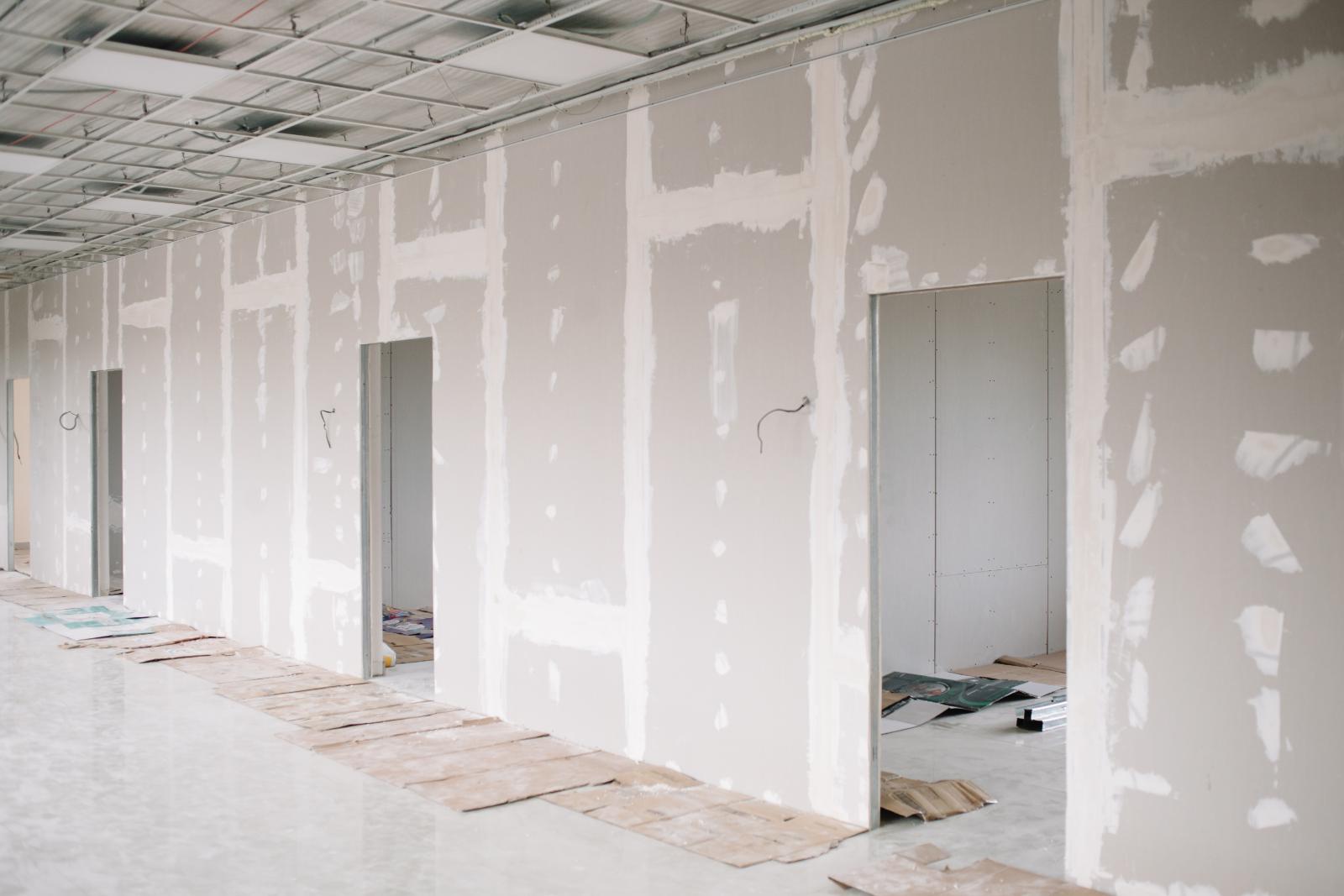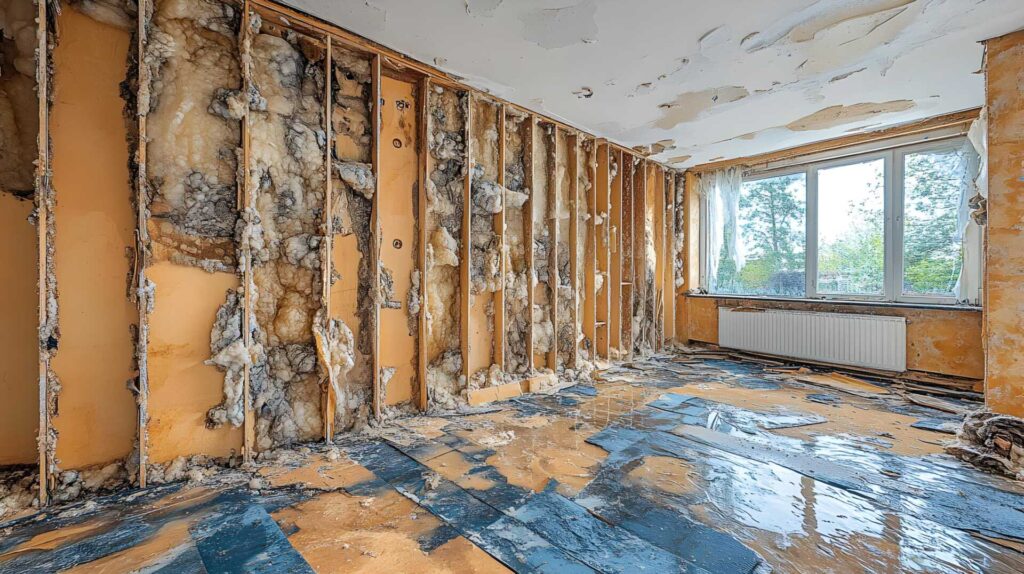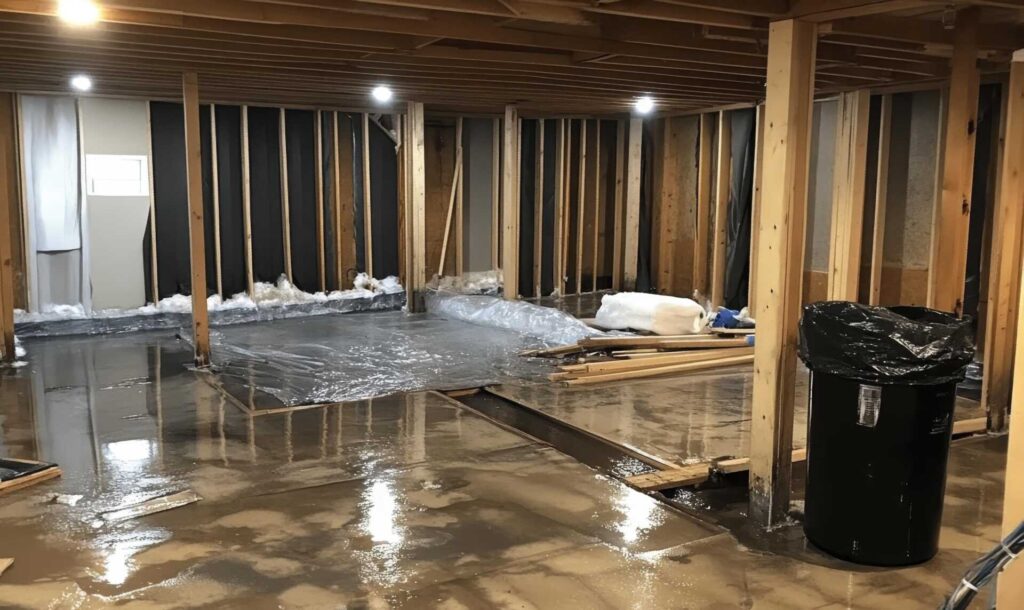Contents
When it comes to keeping your walls hole-free, balancing decorative flair with structural integrity is essential. By following a few simple but effective tips, you can maintain the pristine condition of your drywall and avoid the hassle of repairs. From understanding the importance of wall studs to utilizing the right anchors for different items, each step plays a vital role in safeguarding your walls. So, let’s explore these preventive measures together and guarantee that your walls remain intact for the long haul.
Key Takeaways
- Regularly inspect walls for studs using a stud finder.
- Use proper anchors that match the item’s weight for stability.
- Limit hanging items to reduce wall stress.
- Check wall material for appropriate mounting technique.
- Utilize adhesive hooks for lightweight items without drilling.
Inspect for Wall Studs Regularly
Regularly inspecting your walls for wall studs is essential in preventing drywall holes. Wall stud inspection is paramount for maintaining the structural integrity of your walls and ensuring that heavy items are securely mounted.
By using a stud finder, you can locate these vertical framing members behind your drywall efficiently. The significance of stud finder usage can’t be overstated, as it helps you identify the precise location of studs, enabling you to anchor items securely without damaging the drywall.
To begin, make sure you have a reliable stud finder on hand. Start by placing the stud finder flat against the wall and calibrating it as instructed. Slowly move the stud finder horizontally across the wall until it indicates the presence of a stud. Once you have located a wall stud, mark its position with a pencil. Repeat this process in different areas to identify multiple studs for proper anchoring.
Regular wall stud inspection and maintenance are critical tasks that should be integrated into your home care routine. By consistently checking for studs behind your walls, you can proactively address any issues before they escalate, such as preventing drywall holes caused by improperly anchored items.
Use Proper Anchors for Heavy Items
Ensure secure mounting of heavy items by selecting and utilizing appropriate anchors for best weight distribution and stability. When it comes to anchor selection, it’s essential to match the anchor type with the weight of the item you’re hanging. For heavy items, consider using toggle bolts, molly bolts, or anchor screws, as they offer higher load capacities compared to standard nails or screws.
Proper installation techniques are just as important as selecting the right anchors. Make sure to follow the manufacturer’s instructions carefully, drilling the correct size hole and ensuring the anchor is inserted snugly into the wall. This will help distribute the item’s weight evenly across the anchor, reducing the risk of it pulling out of the drywall.
Minimize Hanging Items on Walls
To prevent unnecessary stress on your drywall, it’s important to limit the number of items you hang on your walls. By minimizing the amount of decorations and heavy objects, you can reduce the risk of damaging your walls over time.
Make sure to use sturdy mounting hardware for any items you do choose to hang to make certain they’re properly supported.
Limit Wall Decorations
Limiting the number of items you hang on your walls can help prevent unnecessary drywall holes. When it comes to wall decorations, less is often more. Here are some tips to help you minimize hanging items on your walls:
Strategic Placement: Instead of cluttering all your walls, choose one or two focal points for decorations. This will reduce the number of holes across your walls.
Gallery Walls: Consider creating a gallery wall with multiple pictures or artworks grouped together. This allows you to achieve a decorative look without putting up multiple individual items.
Functional Decor: Opt for wall decorations that serve a purpose, such as mirrors or shelves. This way, you can enhance your space aesthetically while minimizing the number of holes needed.
Large Statement Pieces: Instead of numerous small decorations, go for a few large statement pieces that can make an impact on their own. This will reduce the overall number of holes in your walls while creating a focal point.
Use Sturdy Mounting Hardware
To minimize the number of holes on your walls, prioritize using sturdy mounting hardware for hanging items. When selecting mounting hardware, opt for high-quality options that distribute weight evenly to prevent damage to your drywall. Proper hardware selection plays an essential role in reducing the need for frequent repairs and maintaining the integrity of your walls.
Consider different mounting techniques based on the items you plan to hang. For heavier items such as mirrors or shelves, use anchors or screws that provide strong support; for lighter decorations like picture frames, adhesive hooks or nails may suffice. By matching the appropriate hardware to the weight and size of the item, you can minimize the risk of holes and cracks in your drywall.
Regularly inspect your mounted items to ensure they’re secure and not causing any strain on your walls. By proactively monitoring the condition of your wall decorations and implementing sturdy mounting hardware, you can effectively prevent unnecessary damage and maintain the appearance of your walls for years to come.
Be Cautious When Drilling Holes
When drilling holes in drywall, always proceed with caution to avoid unnecessary damage. Drywall is delicate and can easily crack or crumble if not handled carefully.
Here are some tips to help you drill holes in drywall effectively:
Use the Right Drill Bit: Select the appropriate drill bit for the job. For drywall, a sharp twist bit or a paddle bit works best to create clean holes without causing excessive damage.
Check for Wiring and Pipes: Before drilling, use a stud finder to make sure you aren’t drilling into any electrical wiring or plumbing pipes behind the drywall. Damaging these can lead to costly repairs and safety hazards.
Start Slowly: Begin drilling at a slow speed to prevent the drill bit from catching and tearing the drywall. Once you have made an initial dent, you can increase the speed gradually.
Avoid Applying Excessive Pressure: Let the drill do the work. Applying too much pressure can cause the drill bit to punch through the drywall forcefully, leading to cracks and larger holes than intended.
Utilize Adhesive Hooks When Possible
Consider using adhesive hooks as a vital solution for hanging lightweight items on drywall without the need for drilling holes. Adhesive hooks can provide decorative alternatives and act as temporary solutions for your hanging needs. These hooks are ideal for items like keys, small frames, or lightweight decorations that don’t require heavy-duty support.
It’s important to follow proper installation techniques to ensure the effectiveness of adhesive hooks. Start by cleaning the area of the wall where you plan to place the hook with a mild cleaner to remove any dust or debris. Next, firmly press the adhesive side of the hook onto the wall and hold it in place for a few seconds to secure the bond. Allow the adhesive to set for the recommended time before hanging any items on the hook.
When it’s time to remove the adhesive hook, use caution to prevent damage to the drywall; slowly peel the hook off the wall, applying gentle pressure to avoid tearing the drywall paper. If there’s any residue left behind, you can use rubbing alcohol or a mild adhesive remover to clean the area without causing harm to the wall surface.
Avoid Excessive Pressure on Walls
When mounting items on your walls, remember to apply gentle pressure to avoid damaging the drywall.
By minimizing impacts and distributing weight evenly, you can prevent unnecessary strain on the walls.
This approach will help maintain the integrity of your drywall and reduce the likelihood of unsightly holes.
Gentle Wall Mounting
Always mount items on the wall with gentle pressure to prevent damage to your drywall to avoid creating unnecessary holes. When hanging solutions or using decorative hooks, it’s important to prioritize wall protection and care to maintain the integrity of your walls.
Here are some tips to guide you in gently mounting items on your walls:
Choose the Right Tools: Select appropriate hooks or mounting hardware that distribute weight evenly to reduce pressure points on the drywall.
Avoid Hammering: Instead of forcefully hammering nails or screws into the wall, use gentle pressure to insert them gradually.
Check Wall Material: Be mindful of the wall material you’re working with and adjust your mounting technique accordingly to prevent unnecessary damage.
Use Anchors Wisely: When necessary, utilize anchors to provide additional support for heavier items, ensuring a secure and gentle attachment to the wall.
Minimize Wall Impacts
Minimize wall impacts by distributing pressure evenly when mounting items to prevent unnecessary damage to your drywall. To protect your walls effectively, consider employing various wall protection methods. Using techniques such as adhesive hooks or anchors can help disperse weight, reducing the chances of creating holes or causing cracks in the drywall.
Remember to avoid concentrating pressure on a single spot when implementing impact prevention strategies. Instead, spread the load across a broader area to minimize the impact on a specific section of the wall. By following these hole avoidance tips, you can maintain the integrity of your drywall over time.
Regular wall maintenance techniques, including inspecting for any existing damage and promptly addressing it, can also help prevent the need for extensive repairs in the future. Being proactive about wall care and implementing preventive measures will contribute to a more durable and aesthetically pleasing living space.
Repair Small Holes Promptly
Upon noticing small holes in your drywall, promptly addressing them is essential to prevent further damage and maintain the integrity of your walls. Neglecting small holes can lead to more extensive repairs down the line.
Here are some tips to help you repair small holes promptly:
Utilize Patching Techniques: Invest in a quality patching kit from your local hardware store. These kits typically include a spackle, a putty knife, and sandpaper to effectively fill and repair small holes.
Prioritize Hole Prevention: Once you’ve repaired the hole, take steps to prevent new ones from forming. Be cautious when moving furniture, hanging decorations, or performing any activities that could potentially damage the drywall.
Implement Maintenance Tips: Regularly inspect your walls for any signs of damage or wear. By catching small holes early on, you can avoid more significant repairs in the future.
Learn Wall Repair Techniques: Educate yourself on basic wall repair techniques to address small holes promptly. Understanding how to patch small holes can save you time and money in the long run.
Reinforce Weak Areas With Tape
To reinforce weak areas in your drywall, using tape is a simple yet effective solution. This method helps prevent weak spots from developing into larger holes over time.
Tape for Reinforcement
Strengthen weak areas in your drywall by applying tape for reinforcement, guaranteeing a durable and long-lasting finish. When using tape for reinforcement, it’s crucial to take into account its durability and proper application techniques to achieve the best results.
Choose the Right Tape: Opt for a high-quality mesh tape designed specifically for drywall repairs to ensure maximum strength and resilience.
Properly Prep the Area: Clean the surface thoroughly before applying the tape to ensure proper adhesion and a smooth finish.
Apply the Tape Correctly: Press the tape firmly into place, ensuring it covers the weak area completely to provide excellent reinforcement.
Finish with Joint Compound: After applying the tape, cover it with joint compound, feathering the edges for a polished finish that blends seamlessly with the rest of the wall.
Prevent Weak Spots
Reinforce weak areas in your drywall by strategically applying tape to prevent the formation of weak spots and ensure a sturdy surface. Wall reinforcement using tape is an important step in hole prevention and maintaining the integrity of your drywall.
Begin by identifying areas that exhibit signs of weakness, such as hairline cracks or areas that feel soft to the touch. Once located, apply self-adhesive fiberglass mesh tape over these vulnerable spots. Press the tape firmly into place, ensuring it adheres securely to the drywall surface.
The tape acts as a barrier, strengthening the weak areas and preventing them from developing into larger holes over time. By reinforcing these sections proactively, you create a more durable and long-lasting wall surface.
Additionally, when applying joint compound or plaster over the taped areas, the tape helps to distribute the pressure evenly, reducing the likelihood of future cracks or holes forming. Remember, investing time in wall reinforcement now can save you from costly repairs down the road.
Opt for Professional Installations
Consider hiring a professional installer to ensure proper drywall installation and minimize the risk of creating holes during the process. Professional installers bring expertise and precision to the job, ensuring that your walls are sturdy and less prone to developing holes over time.
Here are some reasons why opting for professional installations can be beneficial:
Skill and Experience: Professional installers have the necessary skills and experience to handle the installation process efficiently, reducing the likelihood of mistakes that could lead to future holes.
Proper Tools and Techniques: Professionals use specialized tools and techniques that result in smooth installations, contributing to the overall durability of the drywall.
Time and Cost Efficiency: While it may seem like a cost-saving option for DIY repairs, professional installations can save you time and money in the long run by preventing unnecessary repairs and maintenance.
Quality Assurance: Professional installers offer a level of quality assurance that ensures your drywall is installed correctly the first time, minimizing the need for frequent fixes.
Educate Household Members on Prevention
Educating household members on preventing drywall holes is essential for maintaining the integrity of your walls. Communication strategies play an important role in ensuring that everyone in the household understands the significance of preventing drywall damage.
Start by having a family meeting to discuss the various prevention techniques and their importance in maintaining household safety.
One effective prevention technique is emphasizing the significance of handling furniture and other heavy objects with care. Remind household members to lift and move items properly to avoid causing damage to the walls.
Additionally, educating everyone on the proper way to hang items like pictures and shelves can help prevent unnecessary holes in the drywall.
Regular home maintenance checks are also critical in identifying any potential issues that could lead to drywall damage. Encourage household members to report any signs of wear and tear on the walls promptly. This proactive approach can help address minor problems before they escalate into larger issues.
Summary
Following these effective tips, you can easily prevent drywall holes and maintain the integrity of your walls. Remember, an ounce of prevention is worth a pound of cure.
Check for studs regularly, use proper anchors, and be cautious when hanging items. Use adhesive hooks for lightweight items and promptly repair any small holes.
By taking these simple steps, you can keep your walls looking great for years.




